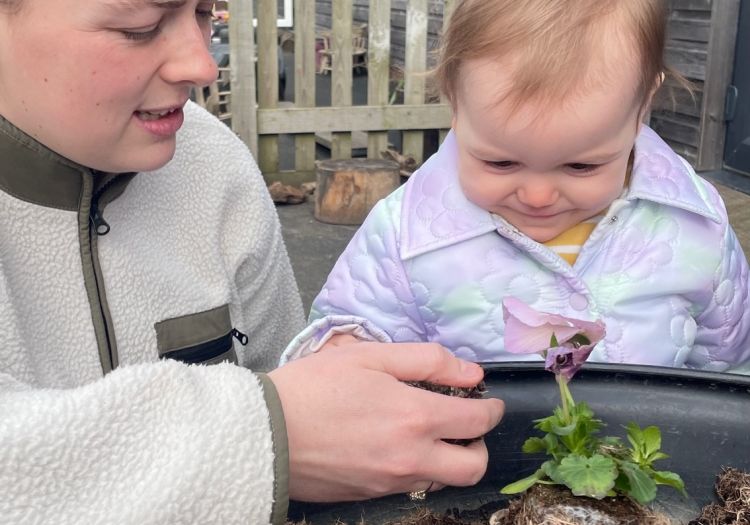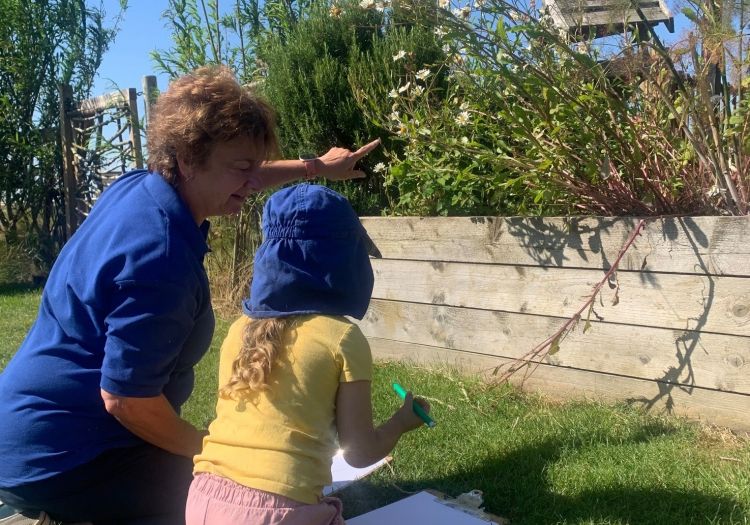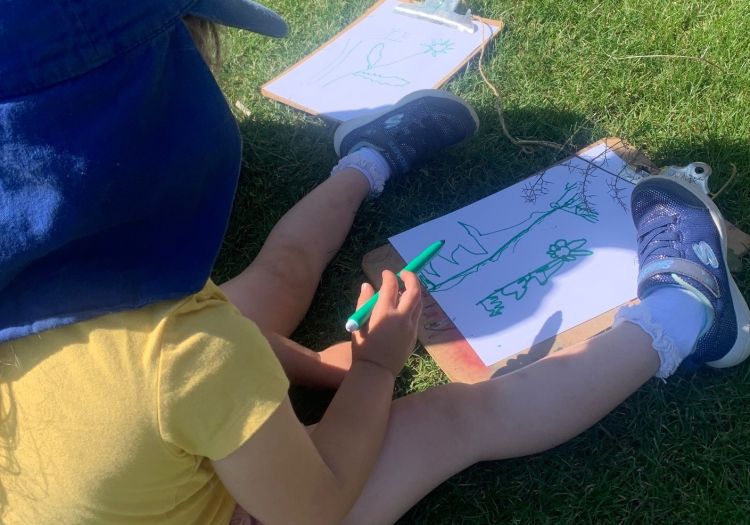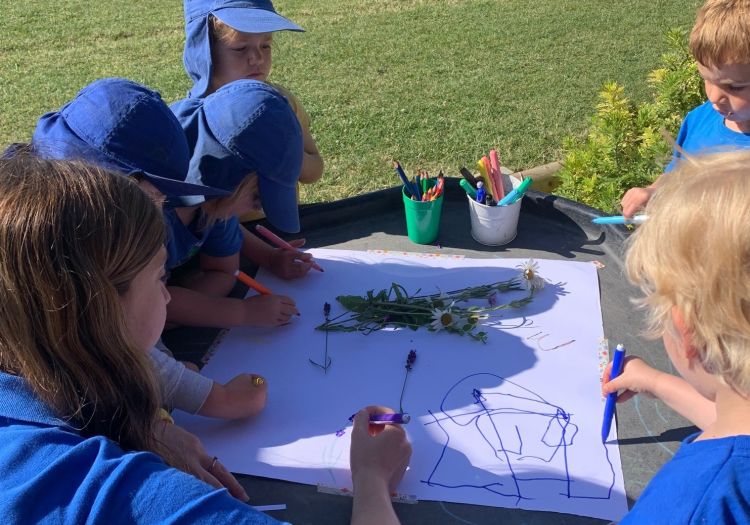Observational Drawings Blog
A blog explaining the progression of observational drawing of nature.
Hello! I’m Laura and I started at Great Wood Farm in April this year and am the Deputy Manager. I originally studied a BA in Illustration and while living in Australia was offered the opportunity to run a visual arts program at a Kindergarten. I enjoyed the time I spent with these children so much I immediately started studying in the evenings to retrain as an early years teacher. I am passionate about supporting each child’s innate creativity and highly value the creative process as a vehicle for learning.
Today we look at a learning goal for reception aged children in Development Matters, which states 'Children at the expected level of development will explore the natural world around them, making observations and drawing pictures of animals and plants.'
It may seem strange to look at a learning goal for reception aged children when planning for children in an early years setting but like all learning goals they will go on to achieve, children have been busy developing the skills they need to for years before, since birth really!
To be able to successfully draw from observation children must be curious, eager to investigate and skilled at noticing their environments. They must have the desire and motivation to create and communicate their ideas, and finally the concentration and fine motor control and skill to successfully translate these ideas into an art work. Lets look at how children at Great Wood Farm have been developing these skills from their first days in the baby room right through until their time in Kindergarten.
Babies are busy exploring the world around them with all their senses. Our baby room offers an environment resourced with varied and interesting materials for the babies to explore pattern, colour and texture. A dedicated black and white space provides the contrast young babies need to see clearly, attracting their attention and stimulating their vision. Babies can use a range of materials to begin to mark make. They explore paint with their whole bodies, move their hands and feet through mud and gloop, and mark make with large palm crayons. Through these experiences, they begin to see the ways they can impact their environment, begin to make deliberate choices and learn to control their movements.
Babies at Great Wood Farm enjoy spending time in the outdoor environments, visiting the farm animals and the woods. Practitioners draw their attention to the world around them, fostering their natural curiosity and sense of wonder at the beauty of the natural world. Even the youngest baby can feel soothed by the gentle wind blowing through the woods and observe the way the sunlight makes patterns as it filters through the leaves.
As children move up into the Toddler room their curiosity grows! They are eager to explore their environment and their observations become more astute. Together with their practitioners, they track the seasons, observing the journey from frog spawn to tadpole, to froglet, to frog. They make close observations using magnifying glasses and talk excitedly about their observations. They seek out more information from books, and develop the understanding that images convey meaning and information. They enthusiastically share their discoveries and ideas and cannot wait to tell you what they have discovered today!
Toddlers mark making capabilities have also increased. They develop these skills as they draw with sticks in the mud, finger paint and draw in gloop. They begin to paint and draw with chalk on large upright surfaces using whole arm movements, a crucial step to being able to control the same smaller scale hand movements. At this age, children begin to become more controlled and deliberate in their mark making and may begin to make meaning and communicate ideas through their art. Exciting times!
By the time children reach Kindergarten, they are knowledgeable and skilled at observing the world around them. They have an understanding and appreciation for the natural world fostered by their time spent in the woods. They notice and closely observe tiny mushrooms growing, the shadow patterns the leaves make on the shade sale and the different flowers growing each time they visit. They spend time listening, noticing the natural and manmade sounds around them.
Our planning in the moment approach means practitioners support children in following and extending their own ideas, fostering their self believe that their ideas and creations are valued and important. Children are confident to communicate their knowledge and ideas and they demonstrate this as they create treasure maps and draw plans for their constructions. They understand marks can convey meaning and begin to use their marks to communicate their ideas and use their drawings to record events, tell stories and communicate ideas. Practitioners foster these skills adding words and stories to children’s work.
Kindergarten children are developing the fine motor strength and control and needed to make their mark making deliberate and purposeful. They are skilled observers, recognising shapes and lines and have opportunity to practice the up and down and round and round movements needed to create these through fine motor and gross motor movements. With these skills and their confidence, well-nurtured children are able to depict increasingly recognisable images. Many children in the Kindergarten rooms can be observed creating observational drawings in their self-directed play as they create drawings, visual stories, maps and diagrams.
It has been a joy to reflect on the learning journey children take in both their mark making and their exploration and appreciation of the natural world around them. Through the fostering of these skills at every step of children’s development we ensure every child leaving Great Wood Farm will have the tools they need to achieve the learning goals set out in Development Matters as they move on to school and more formal learning. Such reflection always reminds me what incredible, innate learners our children are and that we must take time to recognise, fully foster and celebrate each and every step on their learning journeys.




